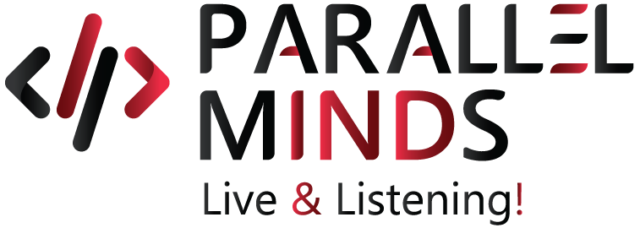Maximum Value Possible (MVP): Raising the Bar to Build and Deliver Better Products, Faster
We often discuss the concept of a Minimum Viable Product or MVP in the tech world. A bare-bones version of the final product, an MVP is designed for quick market runs, assumption validations, and crucial feedback gathering.
At Parallel Minds, in our endeavor to constantly improve existing concepts, we’ve supercharged the MVP concept by transforming it into the term Maximum Value Possible (MVP).
The Traditional MVP Concept
More of a starting point than a finishing line, the traditional concept of MVP enables you to get a product into the market at a rapid pace, running all possible tests, gathering feedback, and pivoting where required. However, despite its widespread adoption and proven success, it does have its list of limitations:
Feature Limitations: A traditional MVP, while relying on a tried-and-tested methodology, lacks several features that could improve its workings and help deliver a standout product.
Misinterpretations: Users interacting with a bare-bones MVP may fail to grasp the overall idea and deliver very specific feedback that may not always line up with the broader idea driving the product.
Competitive Vulnerability: Competitors who have fairly defined product variations may gain an edge over your MVP simply because they deliver on certain aspects that the test user base may prefer over your lineup of features.
The Goals of an MVP Run
A crucial phase in a tech product development cycle, an MVP run is all about testing market viability for a product, flagging down possible gaps, and exploring crucial opportunities. Here’s a list of MVP goals every development team pursues:
Market Fit Validation: The primary goal of an MVP run is determining if a proposed product is viable for a market and meets a genuine need. In the hands of a real user, a product enables product teams to collect valuable feedback through firsthand insights and genuine interactions.
Crucial Early User Feedback: A team’s first opportunity to collect early feedback, an MVP run is a direct bridge between product developers and eventual users.
Decisions Driven by Data: User behavior, engagement metrics, feature uses — all this data adds up to a goldmine of insights and information for a development team to base their improvements on. It enables developers to cut down on features that do not provide value and add others to a user’s wishlist.
Financial Viability: Developing a full-fledged product requires spending large financial resources. An MVP, by contrast, needs a smaller investment, which saves valuable resources. More importantly, when you consider the risks associated with developing a final product only for it to fall short of user expectations, an MVP makes even more financial sense.
Promotion of Early Adoption: An MVP that makes the right impact garners a lot of attention and creates excitement in the market. It paves the way for early adoptions, gets investors interested, and creates a buzz that adds unprecedented mileage to your marketing plans.
Improvements and Iterations: Rapid iterations are an integral benefit of an MVP run. The feedback teams receive from users equips them with insights that help in streamlining features, addressing gaps, and introducing improvements to develop better versions of a product.
The Parallel Minds MVP Concept: Maximizing Value Across the Board
At Parallel Minds, our collective experience in low code development and traditional custom development enables us to create an MVP that surpasses the benchmark of being “viable” and delivers so much more. Here’s how we accomplish our Maximum Value Possible goals:
Leveraging Low Code for a Working Prototype: Our ability to leverage low code platforms allows us to build a product’s core functionality and framework at a rapid pace. The result is a working prototype with key features that is developed in a fraction of the time required in a traditional coding setup.
Custom-Coded Development for Distinction: Even as a low-code working prototype takes shape, our development team gets to work on distinctive, custom-coded elements to set your product apart from competitors. Whether it’s an algorithm, an interface, or niche integrations, we aim for proprietary development and unique approaches.
Proactive and Iterative Collaboration: Our agile approach requires constant collaboration with clients, which in turn introduces constant refinements to the entire process. The result is a maximum-value approach at every step, ensuring that every step of product development aligns with the improved plans.
Features with a Solid Foundation: Our Maximum Value Possible prototype includes a set of features that aren’t just last-minute additions but well-planned executions. This enables users to benefit from and experience a set of core features, thus enriching the quality of feedback. In turn, this feedback results in more impactful pivots.
Cutting Down on Time-to-Market: This combination of low code and custom development enables us to floor the pedal on development timelines without risking compromises in functionality. Quicker delivery of refined products allows for speedier user experience runs, a nimble feedback loop, and rapid iterations.
The Parallel Minds MVP Process: Leading to Maximum Value Partnerships
Our process revolves around five crucial functions:
Consultation and Discovery: Our team works hard at understanding your primary vision and eventual goal, while researching and collecting insights on your target audience and intended market.
Rapid Low Code Prototyping: We quickly develop a working model of your product to launch the testing of core functionalities.
Custom Development Integration: We seamlessly integrate customized coding solutions to introduce unique features to your product.
User Testing and Feedback: We gather valuable feedback through the smart monitoring of user experiences and transform these insights into MVP iterations.
Final Launch and Refinement Tweaks: All these steps lead to the delivery of a refined MVP that is launch-ready while simultaneously providing the groundwork for continuous improvement goals.
Our commitment to your product, since it involves continuous improvement and development, goes beyond the MVP stage. Our team stays in sync with the support, upkeep, and ongoing development improvements to ensure that your product consistently meets its sustenance and evolution goals.
Kickstart a Maximum Value Possible (MVP) Journey with Parallel Minds Today
More than just a product or service, the Parallel Minds MVP strategy accelerates your entire product development process, saves valuable resources, provides rich actionable feedback, and sets up your entire product development cycle for sustained and improved success.
So why settle for a minimum viable product when you can partner with us and achieve the maximum value possible instead!
Contact our team today to schedule a consultation and explore an impactful and innovative approach to the idea of an MVP.
Share:
More Posts

Value Stream Mapping – Current and Future States
If you’ve ever witnessed a brilliant idea with the potential to develop into a successful

The Digital Evolution of a Lean Manufacturing Ecosystem: The Turnaround from Waste to Profit
As leaders in the tech space, we owe it to our respective industries to revolutionize

